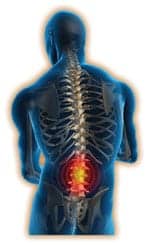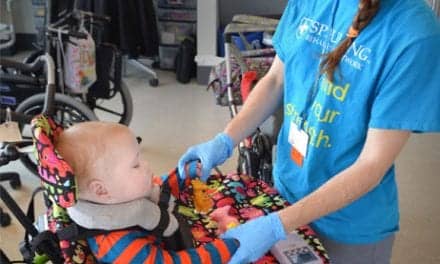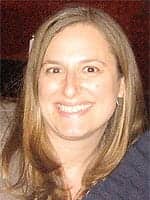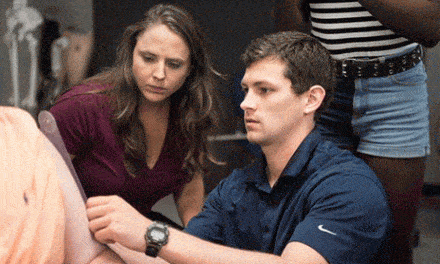 |
After an acute injury, once the swelling has been quelled by the application of cooling modalities, it’s usually time to turn up the heat to expedite healing and reduce the pain. As far back as the Egyptians—who used hot stones to relieve painful muscles and joints—the use of heat for the relief of deep tissue pain has been a favored modality by health care professionals in almost every culture.
Although standard applications of heat from hot towels, heating pads, whirlpools, ultrasound, etc, can offer a modicum of pain relief by increasing blood circulation and stimulating the body’s thermoreceptors (which block the body-to-brain pain receptors), more intensive tactics are often required. Those larger affected areas—like backs, deep muscles, and larger joints—often require something more, and a significant number of physical therapy professionals turn to the application of diathermy.
Jeff Powe, senior product manager for DJO-Chattanooga, claims that diathermy is a recent addition to the company’s technology portfolio. “We received our FDA 510(k) clearance to market in April, and we began marketing the devices shortly thereafter. While the use of diathermy has been an accepted or standard practice in other parts of the world, it is just now experiencing a resurgence here in the United States,” says Powe. Primarily used in closely monitored clinical environments, diathermy exists in several formats: shortwave, paraffin, infrared, ultrasound, and microwave (shortwave and ultrasound in physical therapy applications). “Chattanooga’s shortwave diathermy device has been cleared by the FDA for pain relief, muscle spasm reduction, decrease in joint stiffness, contractures, increase in blood flow, chronic inflammatory conditions, bursitis, tenosynovitis, synovitis, and chronic inflammatory pelvic disease,” says Powe. Any practice setting that needs a deep heating modality can benefit from a shortwave diathermy device, according to Powe. “Many clinicians across all care settings have gravitated to shortwave diathermy due not only to the overall deep heating benefits but also to the ease of use factor when compared to other heating modalities,” he says. Diathermy takes the application of basic heat (or thermography) therapy to a higher, more intense level. The use of targeted shortwave electromagnetic pulses stimulates healing in deep tissue where standard heating modalities are less effective and do not penetrate the skin.
According to Powe, shortwave diathermy is the clinical application of electromagnetic energy to the body at a fixed radio frequency of 27.12 MHz. “The electromagnetic energy is converted to thermal energy. This energy can then produce thermal and nonthermal responses with physiological and therapeutic effects. Shortwave diathermy is a deep heating modality that heats an area larger than ultrasound and is typically unattended,” states Powe.
Hence, it is the application of shortwave diathermy that is recommended for the deep tissue pain that includes large joint contractures, back pain, muscular stiffness, spasms, sprains, and soreness (when other modalities fail, or are ineffective). In addition, this modality can also be applied in the promotion of swelling and pain reduction following surgery.
“The most common benefits resulting from the use of shortwave diathermy include pain relief, contracture management, and the effects of increasing blood flow to the localized region,” says Powe.
Depending on the amount of heat generated, diathermy offers a panoply of applications—from warming tissue (the relief of pain, etc) to destroying it, as in its use as an adjunct to surgery, when it is used to coagulate, prevent excessive bleeding, and seal off traumatized tissues (the latter uses being most effective in eye surgery and neurosurgery). “The typical treatment time is approximately 20 minutes. However, time is only one factor when considering the proper dosimetry. Other factors include pulsed versus continuous delivery methods, power output, pulse duration, and pulse frequency. Of course, the other chief factor is the overall plan of care for the patient and using the modality as a means to progress them through the care path,” says Powe. In 2002, the FDA issued a public health notification regarding diathermy interactions equipped with implanted leads and implanted systems with leads. The notice identified a risk of serious injury or death for patients with implanted electrical leads who were exposed to diathermy treatments. The FDA received reports in which patients with implanted deep brain stimulators died after receiving diathermy therapy. According to the FDA report, patients had received diathermy following oral surgery, and treatment of chronic scoliosis. In both cases, the interaction of the diathermy with the implanted device caused severe brain damage in the area where the lead electrodes were implanted.1
With a somewhat controversial past, therapists should be aware of some of the precautions when administering diathermy treatments, says Powe. “From a safety perspective, care must be exercised to be aware of all the contraindications and precautions of the device. Common contraindications of all shortwave diathermy devices include patients with implantable electronic devices (eg, cardiac pacemakers, spinal cord stimulators, etc), patients who are pregnant, patients with malignant tumors, and use over the eyes,” says Powe.
Nearly all clinicians cover therapeutic modalities as a part of their academic curriculum. Shortwave diathermy is typically covered as a deep heating modality, according to Powe. “Education is a big part of what DJO–Chattanooga is about, and our diathermy product has a collection of educational materials that will accompany the device. These materials speak not only to the general features and functions of the device but also to the clinical rationale, mechanism of effect, and clinical indications and protocols,” says Powe.
According to Mark Mettler, president of Mettler Electronics Corp, Anaheim, Calif, the company’s first diathermy, the Auto*Therm®, was introduced in 1968. “We have been in continuous production of a shortwave diathermy unit since that time, for more than 40 years. The Auto*Therm 390 can be configured as a portable unit with capacitive electrodes only or as a clinical model mounted on a cart with an arm and an induction drum. In addition, we carry the Auto*Therm 395, which has seven different types of applicators and higher power output,” says Mettler.
As with all class II devices, diathermy products must be validated in a clinical environment prior to marketing the product. As part of the approval process, all products must go through extensive safety testing to meet internationally recognized safety guidelines specific to shortwave diathermy devices, according to Mettler.
“Diathermy is contraindicated over metal (implants, surgical staples, etc), on patients with implanted electronic devices, on metal treatment tables, over metal in clothing, over the pelvic or low back area when an IUD is present, over the pregnant or potentially pregnant uterus, over the eye, in neoplastic tissues to the testes, on ischemic tissues, over the epiphyseal areas (bone growth centers) of the bones of growing children,” says Mettler. The use of shortwave diathermy is gaining popularity in many treatment settings. “Its use is growing as the population of elderly individuals needing rehab grows.
“Shortwave diathermy’s use in sports medicine is also increasing,” says Mettler. Shortwave diathermy uses a radio frequency of 27.12 MHz. When an inductive coil (drum applicator) is used to produce this frequency, eddy currents are created in the conductive tissues under the drum, causing heating in deeper tissues. “Capacitive electrodes produce an electric field, which acts on more superficial tissues causing heating from the outside in,” says Mettler. “The primary benefit of shortwave diathermy is that it warms deep tissues in a large area. It penetrates much deeper than a hot pack and is effective over a larger area than therapeutic ultrasound.”
Jeffrey H. Lipsky is the executive vice president of the International Medical Electronics Ltd, Kansas City, Mo. International Medical Electronics produces the Magnatherm, pulsed short-wave diathermy. “The Magnatherm is the only diathermy that pulses throughout the therapeutic range, providing mild, moderate, or vigorous heating—whatever the patient requires. Most pulsed diathermies pulse only at very low settings, generating little or no heat. Only with Magnatherm are the benefits of pulsed diathermy brought to patients whose conditions require vigorous heating,” says Lipsky.
According to Lipsky, there are two methods of energy transfer. There is the older, less effective method—the conductive method that requires two condensed electrodes spaced on either side of the area to be treated. The patient’s body becomes part of the circuit between the two electrodes. “This method produces a strong electrostatic field with the energy taking the path of least resistance,” says Lipsky.
The energy conjugates in the skin and fat, heating these areas with little deep muscular heating. The other more modern method is the inductive method. Typically, an induction coil is placed inside a drum applicator, according to Lipsky. “The predominate energy is electromagnetic, which penetrates the skin and fat and heats the muscle tissue more readily because of the higher concentration of electrolytes.
“The design of the induction head is extremely important to the benefits the patient receives from the diathermy treatment,” says Lipsky. The main benefit of diathermy treatment is deep tissue heating, which results in increased blood flow, increased metabolic rate, improved oxygenation, increased concentration of white blood cells and antibodies, decreases in inflammation and edema, relaxation and relief of muscle spasm, increased pliability of collagenous tissues, and relief of pain, according to Lipsky. “Diathermy is useful in conditions such as: arthritis, bursitis, tenosynovitis, fibrositis, myositis, sprains, strains, fractures, neuritis, peripheral vascular disease, pneumonia, bronchitis, otitis media, pelvic inflammatory disease, chronic wounds, lymphedema, chronic fatigue syndrome, fibromyalgia, postsurgical pain and edema, and many other pain syndromes. Diathermy is nonaddictive and has few side effects,” says Lipsky.
Lipsky concurs that diathermy is beneficial for the treatment of a variety of conditions; however, its use has been limited—not because of its effectiveness, but because of reimbursement. “Due to politics from certain groups and other factors, Medicare reimburses only $5.41 per treatment and insurance companies have dramatically reduced their reimbursement in recent years. Reimbursement levels are woefully inadequate given cost, time, and space requirements to administer effective diathermy treatments with equipment designed well enough to deliver optimal results,” says Lipsky, who adds that in the mid 1980s Medicare reimbursed $35 per diathermy treatment.
“It is ludicrous that 25 years later they are reimbursing only approximately 15% as much. This lack of reimbursement is jeopardizing the health and well-being of many patients. Doctors and therapists often feel they cannot afford to provide diathermy to patients even though it would greatly help their patients’ condition. This is an outrage,” says Lipsky.
According to Lipsky, diathermy should be administered by or under the direction of a medical doctor, osteopathic physician, chiropractic physician, physical therapist, athletic trainer, or other professional licensed to perform this type of therapy by the state in which they practice.
Gina Bernal is a contributing writer for Rehab Management. For more information, go to .
REFERENCE
- Silberstein N. Diathermy: comeback, or new technology? Rehab Management. 2008;20(1).





